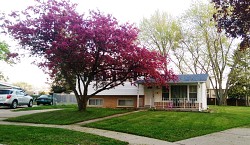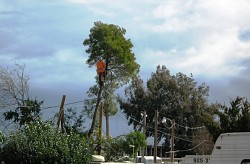Your Spring Pruning Guide
Are you scared of pruning? Lots of gardeners who are picking up the shears for the first time are definitely worried about making a mistake that will damage or even kill their plants, but they don't need to be. Pruning is pretty simple and easy, plants are very forgiving, and moreover, plants love being pruned. Regular pruning will not only stimulate the production of more growth, it will also help plants maintain a healthy, even shape.
Well-pruned trees and shrubs can last for decades or even centuries, depending on the species. There's a pear tree on the East Coast that's almost 400 years old! It wouldn't have lasted that long without judicious, thoughtful pruning to keep it in good health.
So, if you're facing down the pruning sheers and you're terrified, we're here to hold your hand. And if the worst happens, remember that plants are a lot like hair: mistakes grow out, okay?
The experts at Sunset identify four basic pruning cuts, one of which isn't even a "cut" at all. It's called pinching. When you pinch, you use a thumb and forefinger pincher move to snap off a terminal bud. As you may already know, this stimulates more growth at the site, and helps plants stay healthy. You may well be using this technique already on the plants under your own roofing -- houseplants benefit from regular pinching.
Another type of cut, known as heading, is a great deal like pinching, except that you cut further back along the branch. That's not so scary, is it? To head a branch, you cut right above a leaf to stimulate dense growth below the cut.
Having a problem with overgrowth? That's when you use thinning, a more aggressive pruning cut that removes whole stems and branches; you make the cuts at a joint. You'll use thinning for things like removing crossed or tangled branches, thinning out an excess of growth in the middle of a tree, or addressing an overgrown plant. Some crops, like grapes, enjoy being radically thinned. In the case of something like an apple tree, you could prune away as much as 1/3 of the growth.
There's also shearing, which is pretty much exactly what it sounds like. If you have hedges or shaped shrubs, you need to shear them to keep them in shape. This just involves using clippers to cut along an angle to shape a squared hedge, topiary, or other desired shape, and it works best with small-leaved plants. (If you try to turn something with big leaves into a hedge, shearing will look clunky, because it cuts right through leaves and branches indiscriminately.)
Arborists at Oregon State have an excellent diagram of the types of cuts, with illustrations so you can see the correct placement of each cut. You may find this guide helpful for determining precisely how and where to cut if you're new to pruning.
So, now that you know the basics, what do you do when you have a tree in front of you?
First, assess it. Walk all the way around. Look for diseased or dying branches. Take note of branches that cross or tangle with each other and look for areas of overgrowth as well. Consider whether you like the way the tree or shrub looks -- is it bulky and shapeless? Is it lopsided?
As a general rule of thumb, you never want to prune more than 1/3 of a plant's growth, although some trees and shrubs like harder pruning. Things that grow quickly and aggressively (like holly) tend to respond to aggressive pruning more readily than those that grow slowly.
Start by removing obviously sick branches along with growth that's crossing or tangling, because that's going to cause health problems for the tree. The kind of cut you should make depends on whether you want to simply thin growth or head, promoting more growth below the cut -- think about how this will affect the shape of the tree. Next, you can start to assess areas of the tree that need attention: does a tree have a thick canopy? This could block light and make it hard to thrive, so you need some thinning cuts.
Aesthetically, trim trees that have uneven growth or other issues, heading and thinning as appropriate. Something you may also want to consider is the use of thinning to create a tree-like growth habit for shrubs that could go either way; this will make it easier to maintain them, and they may look more attractive.
It's okay to be conservative with pruning in your first year or so as you get the hang of it. If you're nervous, call a Los Angeles landscaper for help and recommendations. Arborists can also help with tasks like pruning very tall trees, as they have the specialized equipment and ladders needed to get the job done safely.
Katie Marks writes for Networx.com.
Related Articles
Looking for a Pro? Call us (866) 441-6648

Landscaping Average Costs
Landscapers Experiences

Fast Professional Tree Service For My Crabapple And Persimmon

I Built A Concrete Retaining Wall As A Defense Against El Nino




